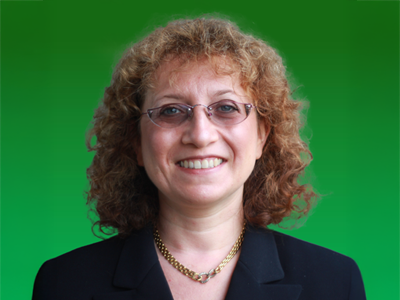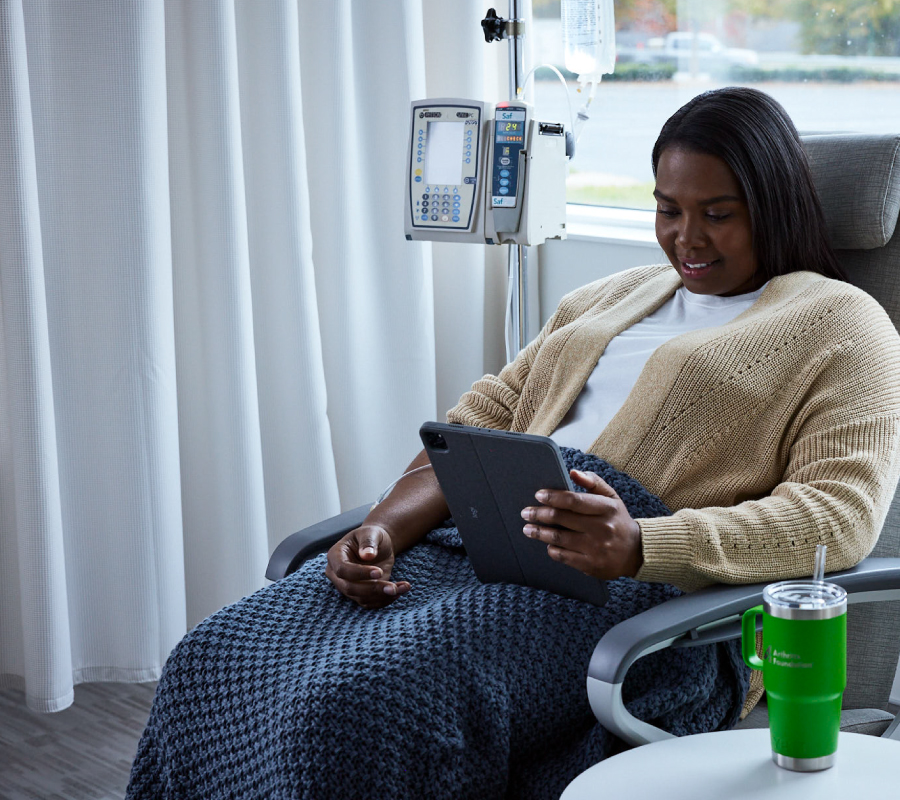Math and Medicine Just Adds Up for Elena Losina, PhD
This principal investigator leads several Arthritis Foundation-funded studies in preventing osteoarthritis.
 Aug. 25, 2025
Aug. 25, 2025
Elena Losina, PhD, is the principal investigator for in the Arthritis Foundation and National Institute of Arthritis and Musculoskeletal and Skin Diseases (NIAMS)-funded KARAT (Knee Arthroplasty Activity Trial) study to improve knee replacement surgery outcomes. Research has found that people who have total knee replacement surgery (TKR) do not tend to increase their physical activity after the surgery, even though they no longer have arthritis-related pain. Dr. Losina is principal investigator for the KArAt trial, which is testing whether personal coaching and financial incentives can help people increase their activity levels after TKR, ideally leading to better arthritis and health outcomes and improved quality of life.
Tell us about your background.
I was born in Ukraine and received a Master of Science in Mathematics from Odessa University. When I arrived in the U.S., my husband told me that in this country, everybody could reach their professional aspirations, and I should think about what I would do if I had a magic wand. I did not need to think long — my dream was to do something that would connect mathematics and medicine. I went to Boston University graduate school to get my PhD in biostatistics and have been enjoying applying my mathematical skills to building probabilistic models of chronic musculoskeletal diseases to establish the value of non-pharmacologic, pharmacologic and surgical treatments as well as designing clinical trials. I am a Director of Orthopedic and Arthritis Center for Outcomes Research (Oracore), Director of Policy and Innovations eValuations in Orthopedic Treatments (PIVOT) center at department of orthopedic surgery at Mass General Brigham and Robert W Lovett Professor of Orthopedic Surgery at Harvard Medical School.
What is your best memory of Odessa University?
The math department had a long tradition of running a Festival of Laughter on April Fool’s Day. That day, the department would be specially decorated with different themes every year. The highlight of the evening always has been a competition of wittiness and laughter between the students and faculty. I was an active member of the organizing committee for several years and was chairing the committee during my junior year. Great memories!
What drew you to the field of science and research, and arthritis research in particular? What do you hope to accomplish professionally?
Studying mathematics, I recognized how mathematical tools could help to establish evidence in medicine that would inform value-based care.
Osteoarthritis (OA) is a chronic disease with a very high prevalence, affecting health-related quality of life of millions of people in the U.S. Currently, there are no disease-modifying regimens for OA, and management is limited to symptoms management. There are a limited number of symptom-modifying regimens. I lead the research team that developed a mathematical model of knee OA. Using the model, we estimated that OA, on average, lasts 26 years, and selecting sequential regimens to manage OA-related pain over this long time remains a challenge. Using the model, we examine various sequential regimens for knee OA to offer critical insights to clinicians and policy makers regarding the value of OA management strategies.
Using the OAPol model, we estimated that more than 4.5 million Americans live with at least one knee replaced. Many undergo total knee replacement (TKR) to reduce pain. Even though TKR provides substantial symptomatic relief, data shows that physical activity in general, and walking in particular, are not increasing substantially after total knee replacement, even when there is a large reduction in pain. Thus, there exists an opportunity to further improve the value of TKR by helping recipients become more physically active by walking for longer times and covering greater distances.
We decided to seek potential solutions in behavioral science, invoking both internal and external motivators for increased engagement in walking among TKR recipients. [This became the KARAT (Knee Arthroplasty Activity Trial) study, which is now in process.]
What was your first osteoarthritis project?
My first OA-related project was one funded by an Arthritis Foundation Innovative Research Grant. We built a model to establish the cost-effectiveness of total knee replacement.
Could you describe what you do with the KARAT trial?
I am the Principal Investigator for the KARAT study and oversee all aspects of its conduct by supervising the team of research coordinators, data managers and coaches.
You are also part of PIKASO and TOPS. Can you describe what you do in those projects?
I feel very fortunate to participate in two OA prevention trials! PIKASO (Preventing Injured Knees from Arthritis Severity Outcomes) is focusing on preventing knee osteoarthritis among people who have sustained an ACL injury. It is a nine-site trial funded by the Arthritis Foundation. I serve as the Principal Investigator of the Coordinating Center for Arthritis Foundation Osteoarthritis Clinical Trials Network, and in that role, I led the teamwork designing and implementing PIKASO.
TOPS is another OA prevention trial focusing on a different population at risk for knee OA — middle-aged women with excess weight. TOPS — The Osteoarthritis Prevention Study — is a four-site randomized clinical trial led by Dr. Steve Messier from Wake Forst University. I serve as a site Principal Investigator at Brigham and Women’s Hospital. We are successfully enrolling subjects in both PIKASO and TOPS trials.
Do you expect KARAT to affect patients either directly or indirectly?
I hope both. I think KARAT participants would receive a direct benefit from participating in a trial that is focused on improving walking among TKR recipients. Faster and longer walking have been shown to be associated with lower mortality and better health-related quality of life.
What are you excited about in OA? What should patients be excited about?
Engaging in OA research offers me an opportunity to use my mathematical background coupled with expertise in study design and data analysis to design impactful studies aimed at improving well-being among many people affected by OA.
Are there any easy and fun math-centric tools that you think will help your neighbor suffering from osteoarthritis?
People often suffer from hearing the word “math-centric,” so I will try to keep it light. I think setting up numeric goals for physical activity is a great math-centric activity. The key is to make those goals reachable and keep track of the progress using some fun gadgets, such Fitbit or the like. Seeing the number of steps or minutes spent doing physical activity going up brings a sense of accomplishment and has been shown to positively correlate with pain reduction.
What inspired you to study people with TKR?
In the U.S. the number of people living with at least one knee replaced is greater than the total number of people with rheumatoid arthritis and some other chronic diseases. People undergoing this major surgery invest a lot in their health. The value of knee replacement could be even better if we find the means of helping people who underwent total knee replacement to maximize the benefits by being more physically active.
What else would you like to share about your involvement with arthritis research?
Clinical research is a “team sport.” It is a great privilege to have the opportunity to work with a group of talented, dedicated individuals caring about people affected by OA. Having a great multidisciplinary team listening to health care providers who care for people with OA helps to identify clinically relevant unanswered questions related to OA, and I apply my analytic skills to design and implement studies to provide answers to these clinical questions. We are grateful to the Arthritis Foundation for funding impactful trials like KARAT.
What is your favorite team sport?
For traditional team sports I would say basketball. I love the fast decision-making and technical complexity of the game. And for the non-traditional team sport, tandem biking. It’s a smaller team but also requires a lot of decision-making and technical skills. I enjoy this team sport and have been an avid tandem biker with my husband. He deserves the full credit of getting me onto the tandem bike. It’s not for the faint-of-heart, especially if you are a stoker [riding in the rear] without access to the brakes! It’s all about trust.

Stay in the Know. Live in the Yes.
Get involved with the arthritis community. Tell us a little about yourself and, based on your interests, you’ll receive emails packed with the latest information and resources to live your best life and connect with others.



